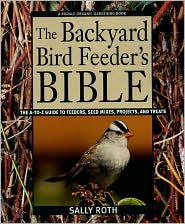 |
| Order online |
Scott Shalaway, a biologist and writer, wrote this article about shrews killing birds at backyard bird feeders:
 If you find a clump of feathers on the snow beneath a bird feeder, suspect the work of a sharp-shinned or Cooper's hawk. But if just a few feathers lie beneath a feeder, a different predator may be responsible. Look among the sunflower seed shells for a one-inch hole in the ground.
If you find a clump of feathers on the snow beneath a bird feeder, suspect the work of a sharp-shinned or Cooper's hawk. But if just a few feathers lie beneath a feeder, a different predator may be responsible. Look among the sunflower seed shells for a one-inch hole in the ground.Watch the hole for about 30 minutes and a small head may emerge. Grab your binoculars for a better look. If you see a pointed snout and beady little eyes, you've seen a shrew.
Small, mouse-like mammals, shrews are voracious insectivores that often kill prey larger than themselves. Pygmy shrews, the smallest mammal in North America, weigh 2 to 4 grams (about the weight of a dime) and eat more than twice their weight in food every day.
 |
| Order online |
No doubt the ground around the bird feeders makes an excellent place to hunt. There is always a supply of food. After digging its burrow, a shrew needs only to sit at its entrance and wait for an unsuspecting bird to hop by.
Robert Morton, M.Ed., Ed.S believes urban sprawl can be offset by creating wildlife-friendly spaces in America's 25,000,000 lawns, one yard at a time! Click HERE to learn why. A portion of Ad sale revenues will be donated to Monarch Watch. Do you have a wildlife-friendly space? Please share it! Contact us on the secure Bpath Mail Form.
